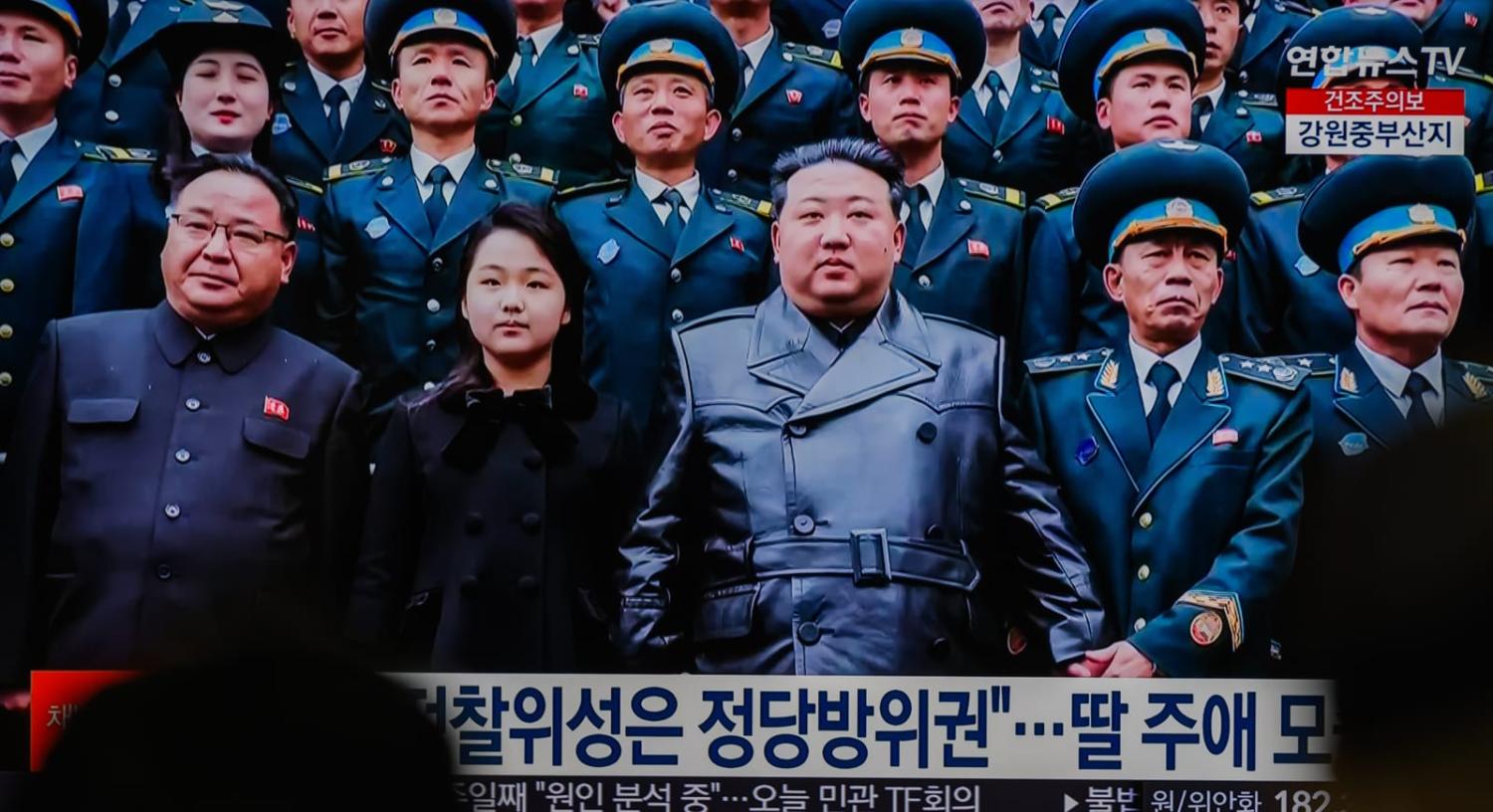North Korea sent a satellite rocket up, and a key deal with South Korea came tumbling down.
The effective scrapping last week of the inter-Korean military agreement was not entirely unexpected but is still significant. South Korea annulled part of the accord after North Korea’s 23 November satellite launch, calling the move “a minimal defensive measure”. But the danger in the wake could be a series of offensive actions by both sides. Pyongyang has since declared it will no longer be bound by the agreement.
Although little known in the rest of the world, having been largely over-shadowed by then US President Donald Trump’s summits with North Korean leader Kim Jong-un, the 2018 Comprehensive Military Agreement had been one of the tangible outcomes of the diplomatic drive by South Korea’s former President Moon Jae-in to engage Pyongyang.
The 17-page document signed in September 2018 included concrete, security-related steps through which both Koreas agreed “to completely cease all hostile acts against each other in every domain, including land, air and sea that are the source of military tension and conflict.” This included agreement to cease live-fire artillery drills and field training exercises near what is known as the “Military Demarcation Line”, designated no-fly zones for all aircraft types over that area, to maintain permanent communication channels, withdraw guard posts, to establish a maritime peace zone, and to transform the Demilitarised Zone separating the Koreas into a peace zone, among other points.
North Korea’s state media aired footage of its first spy satellite being launched, which it claimed was successfully placed in orbit https://t.co/yLpuhlC8jH pic.twitter.com/MLSbiEIQ32
— Reuters (@Reuters) November 23, 2023
But speculation about the endurance of the deal has only increased since the change of administration in Seoul last year, which saw conservative leader Yoon Suk-yeol take power. The no-fly zones had been particularly criticised for imposing limits on surveillance operations. This clause was suspended last week following the North Korean satellite launch. The South Korean military then deployed surveillance drones and reconnaissance aircraft near the border. In response, the North announced it was abandoning the deal and vowed to “immediately restore all military measures that have been halted”. North Korea blamed the South for raising tensions, arguing that the agreement “has long been reduced to a mere scrap of paper.”
The consequences of ending the agreement could be quickly compounded. The inter-Korean hotline was disconnected in April, leaving the two Koreas with no means of direct communication to discuss military, emergency, or crisis prevention measures. Although South Korea blames the North for violating the agreement more than a dozen times, North Korea had not until now suspended the deal. Pyongyang now declares Seoul “will be held wholly accountable in case an irretrievable clash breaks out.”
This means tensions along the border are likely to rise in the coming months. North Korea has already declared it will reinstall armed guard posts along the border and it seems likely the two sides could decide to, resume propaganda activity through loudspeakers, permanently deploy soldiers near the Military Demarcation Line, and increase aircraft surveillance activity.
North Korea, for its part, seems prepared for an increase in tensions, pledging via state media:
We will withdraw the military steps, taken to prevent military tension and conflict in all spheres including ground, sea and air, and deploy more powerful armed forces and new-type military hardware in the region along the Military Demarcation Line.
South Korea went ahead with joint naval drills involving the United States and Japan over the weekend, the kind of activity which regularly draws an agitated response from the North. But Pyongyang is also seeking to brush off any deterrence effect from having a US nuclear carrier group patrolling nearby, boasting its newly acquired space surveillance capabilities allowed pictures of Andersen Air Force Base and Apra Harbour in the US territory of Guam. North Korean media also announced the country plans on “additionally launching several reconnaissance satellites in a short span of time.” It argues that South Korea’s move to scrap part of the 2018 military agreement justified the need to continue expanding and modernising weapons programs.
The deterrence-centred approach favoured by the South Korean administration and its allies in the United States and Japan has failed to sway North Korea from its course. With Pyongyang developing a growing arsenal of weapons, and no reason to engage in diplomacy with Seoul or Washington, this increases the chance of accidental clashes along the inter-Korean border escalating into something bigger.
And neither side is hinting at a change in strategy, generating fears for what might unfold in the year ahead.

